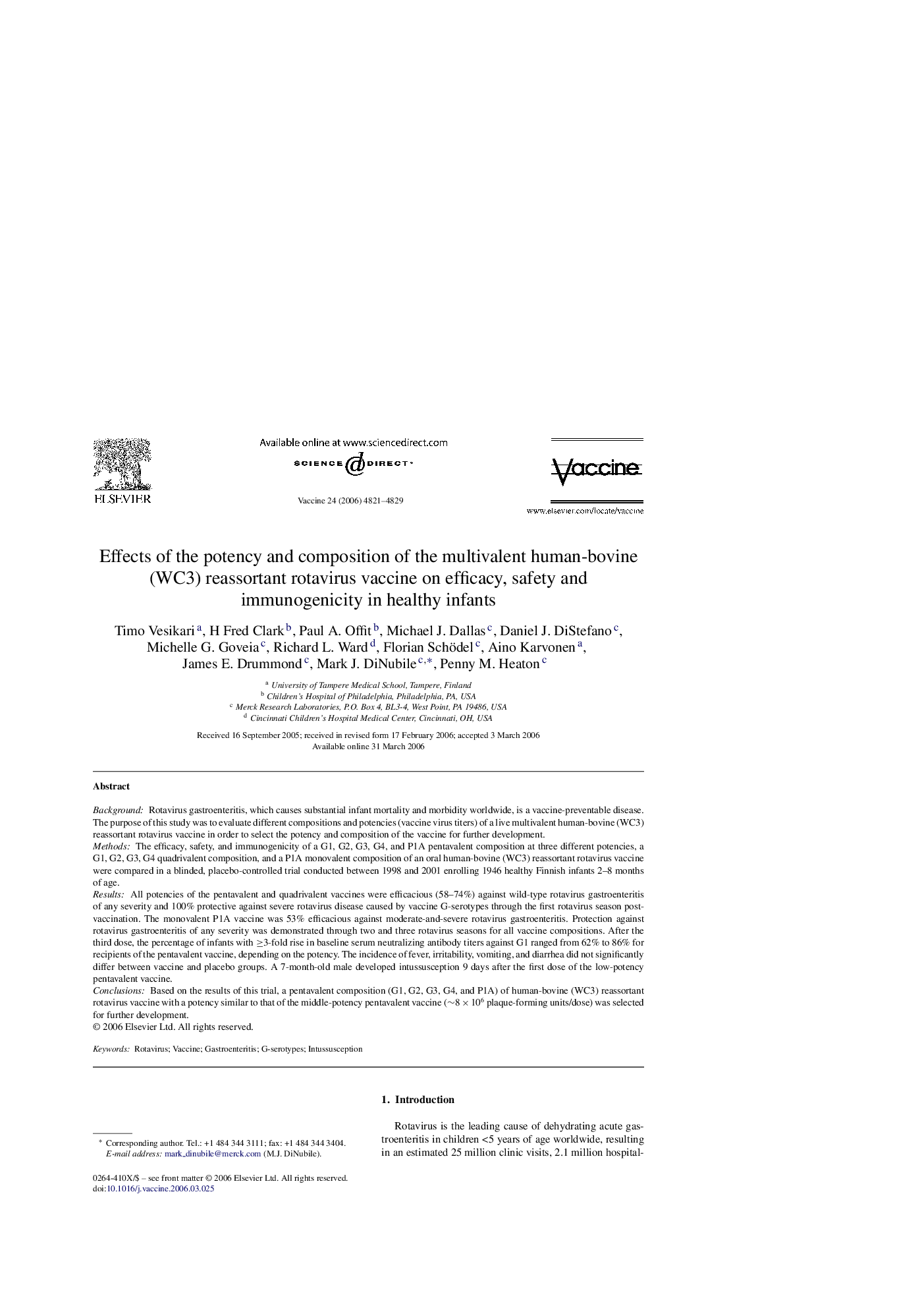| کد مقاله | کد نشریه | سال انتشار | مقاله انگلیسی | نسخه تمام متن |
|---|---|---|---|---|
| 2410106 | 1103248 | 2006 | 9 صفحه PDF | دانلود رایگان |

BackgroundRotavirus gastroenteritis, which causes substantial infant mortality and morbidity worldwide, is a vaccine-preventable disease. The purpose of this study was to evaluate different compositions and potencies (vaccine virus titers) of a live multivalent human-bovine (WC3) reassortant rotavirus vaccine in order to select the potency and composition of the vaccine for further development.MethodsThe efficacy, safety, and immunogenicity of a G1, G2, G3, G4, and P1A pentavalent composition at three different potencies, a G1, G2, G3, G4 quadrivalent composition, and a P1A monovalent composition of an oral human-bovine (WC3) reassortant rotavirus vaccine were compared in a blinded, placebo-controlled trial conducted between 1998 and 2001 enrolling 1946 healthy Finnish infants 2–8 months of age.ResultsAll potencies of the pentavalent and quadrivalent vaccines were efficacious (58–74%) against wild-type rotavirus gastroenteritis of any severity and 100% protective against severe rotavirus disease caused by vaccine G-serotypes through the first rotavirus season post-vaccination. The monovalent P1A vaccine was 53% efficacious against moderate-and-severe rotavirus gastroenteritis. Protection against rotavirus gastroenteritis of any severity was demonstrated through two and three rotavirus seasons for all vaccine compositions. After the third dose, the percentage of infants with ≥3-fold rise in baseline serum neutralizing antibody titers against G1 ranged from 62% to 86% for recipients of the pentavalent vaccine, depending on the potency. The incidence of fever, irritability, vomiting, and diarrhea did not significantly differ between vaccine and placebo groups. A 7-month-old male developed intussusception 9 days after the first dose of the low-potency pentavalent vaccine.ConclusionsBased on the results of this trial, a pentavalent composition (G1, G2, G3, G4, and P1A) of human-bovine (WC3) reassortant rotavirus vaccine with a potency similar to that of the middle-potency pentavalent vaccine (∼8 × 106 plaque-forming units/dose) was selected for further development.
Journal: Vaccine - Volume 24, Issue 22, 29 May 2006, Pages 4821–4829